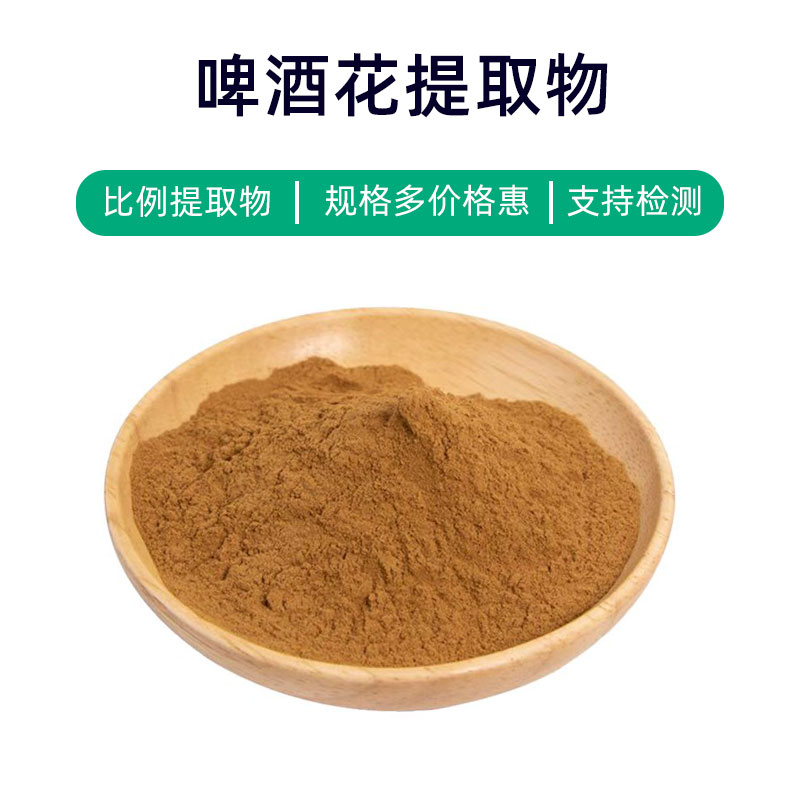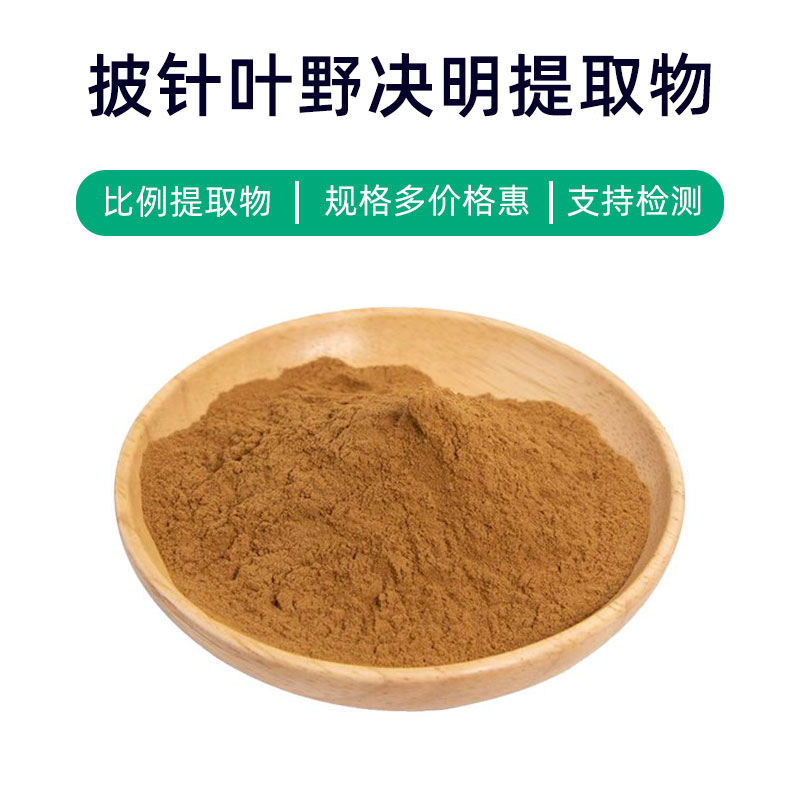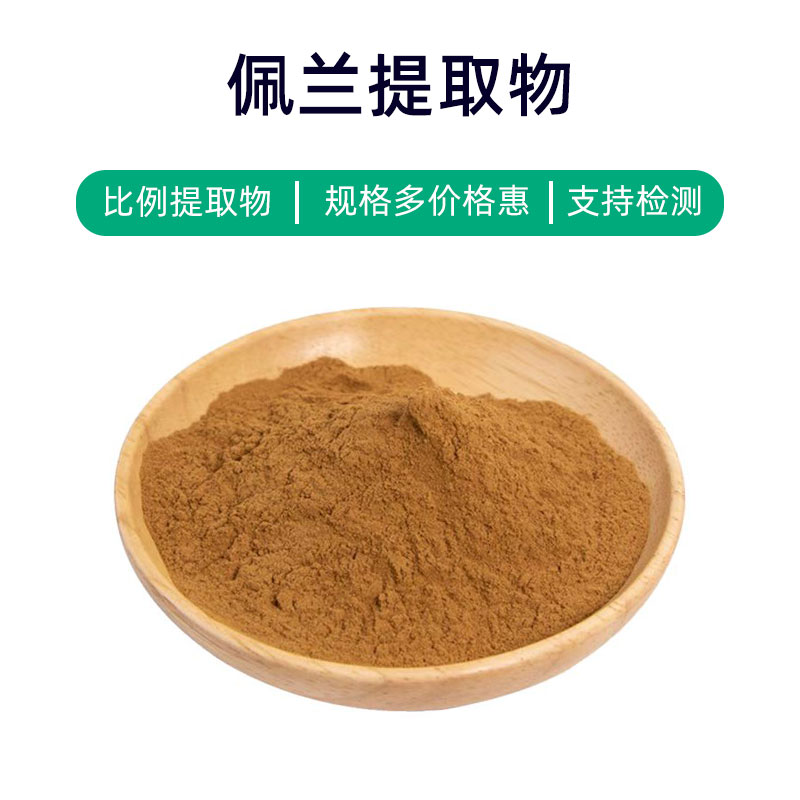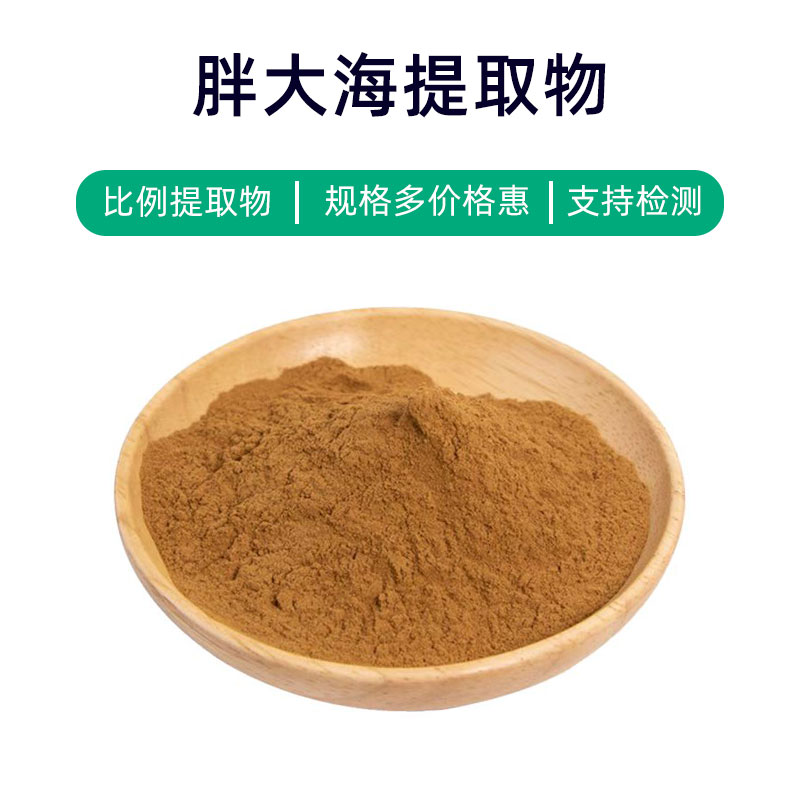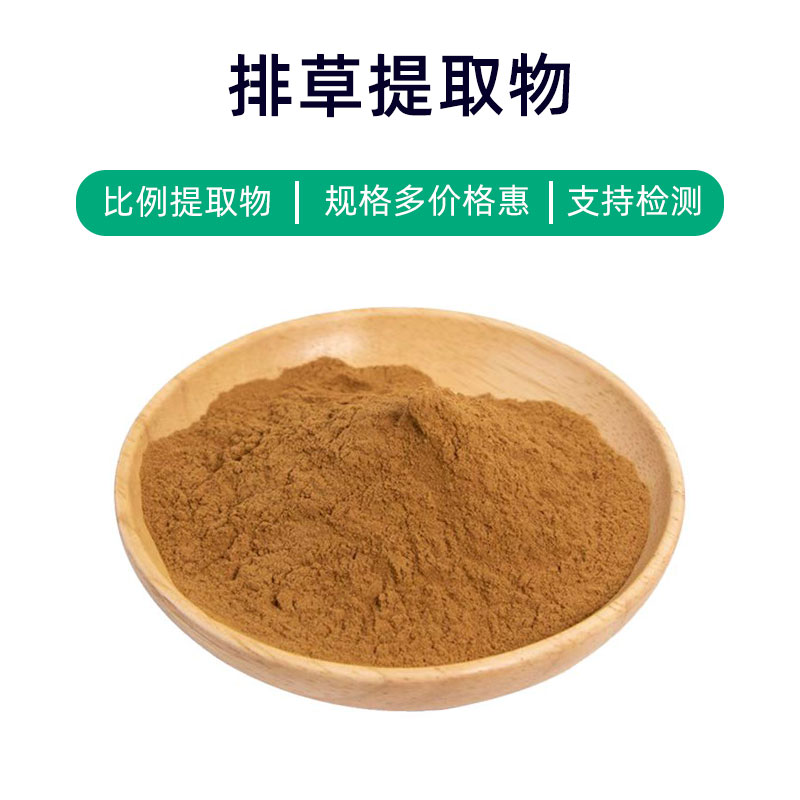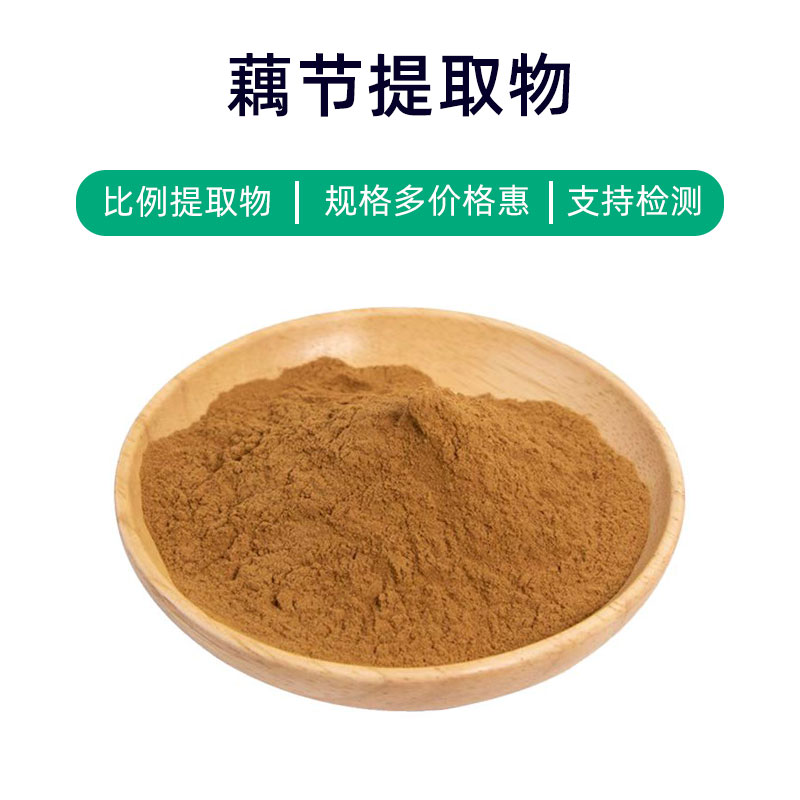Lobelia Extract Product Introduction
Lobelia extract is a natural medicinal component derived from the lobelia plant. Its primary ingredients include lobeline, carboxymethyl lobeline, and other active substances, which provide a range of medicinal benefits. First, lobelia extract has calming and antispasmodic properties that can relieve muscle tension and spasms, showing effectiveness in treating respiratory conditions like asthma and bronchitis. Additionally, lobelia extract is also used to alleviate anxiety and neuropathic pain, helping to relax the body and mind. In the pharmaceutical field, it is commonly used in the preparation of oral solutions, capsules, or topical patches. It should be used as directed by healthcare professionals or product instructions to ensure proper dosage and avoid interactions with other medications. In summary, lobelia extract is a natural medicinal component with broad application prospects, providing new treatment options in the medical field with its sedative, antispasmodic, and anti-anxiety effects.
Lobelia Extract Production Process
The production process of lobelia extract includes the following key steps:
- Raw Material Collection: Fresh lobelia plants are collected, preferably during the flowering period, to ensure a higher content of active ingredients.
- Raw Material Processing: Collected lobelia plants undergo preliminary processing, including cleaning, removing impurities, and crushing, to improve extraction efficiency and product purity.
- Extraction Process: Appropriate extraction methods, such as water extraction, alcohol extraction, or supercritical fluid extraction, are employed to extract active components from the lobelia plant. Extraction conditions must be controlled for suitable temperature, time, and pressure to ensure efficiency and quality.
- Filtration and Concentration: The extract is filtered to remove impurities, followed by concentration to enhance the purity and activity of the extract.
- Separation and Purification: Suitable separation and purification techniques, such as gel filtration, ion exchange, and column chromatography, are used to isolate target components from others, resulting in high-purity lobelia extract.
- Drying and Milling: The purified extract is dried to convert it into powdered or granular form. The drying process must be controlled in terms of temperature and humidity to preserve product activity and stability.
- Packaging and Storage: Finally, lobelia extract is packaged using appropriate materials and methods to ensure product quality and safety. It should be stored in a cool, dry environment away from direct sunlight and high temperatures to prolong shelf life and stability.
Effects and Side Effects of Lobelia Extract
Lobelia extract is a natural medicinal component with various effects and benefits. Here are its main properties:
- Calming and Anti-Anxiety Effects: Containing active compounds like lobeline, lobelia extract aids in alleviating anxiety, tension, and stress, promoting relaxation.
- Antispasmodic Properties: It can relax muscles, helping relieve muscle tension, spasms, and neuropathic pain.
- Improves Sleep Quality: Lobelia extract assists in improving sleep quality, alleviating insomnia and mild sleep disturbances, making it easier to fall asleep and enhancing sleep depth.
- Anti-Inflammatory and Antioxidant Effects: The active ingredients in lobelia extract have anti-inflammatory and antioxidant properties that can reduce inflammation and oxidative stress, helping protect cells from damage.
- Cardiovascular Health Improvement: Research suggests that lobelia extract may help lower blood pressure and enhance cardiovascular health, providing certain protective benefits against cardiovascular diseases.
- Relief for Respiratory Conditions: Lobelia extract can provide some relief for respiratory issues, such as asthma and bronchitis, helping to alleviate symptoms and improve breathing function.
- Immune Enhancement: Some studies indicate that lobelia extract may exhibit immune-modulating effects, enhancing overall immunity and resistance to infections and diseases.
Despite the numerous benefits of lobelia extract, there may be mild side effects during its use, which can include dizziness, nausea, and gastrointestinal discomfort. It is crucial to follow medical advice or product instructions to avoid exceeding recommended dosages, particularly for pregnant or nursing women and children, who should use it under medical oversight. Individual differences may also lead to adverse reactions that should be monitored. If any discomfort or adverse effects arise, discontinue use and consult a healthcare professional promptly.
Application Scenarios and Dosage of Lobelia Extract
Lobelia extract is widely used in the pharmaceutical, food, and cosmetic industries. Here are its applications and dosage recommendations in different fields:
- Pharmaceutical Applications:
- Uses: Lobelia extract is commonly used to prepare calming, anti-anxiety, and antispasmodic medications, as well as to improve sleep and cardiovascular health.
- Dosage: Common methods of use include oral consumption or injection. Specific dosages should be adjusted based on medical advice, with general recommendations ranging from 30-300 mg per day.
- Food Applications:
- Uses: In the food industry, lobelia extract is primarily used as a health supplement ingredient, offering benefits like anxiety relief, sleep enhancement, and immune support.
- Dosage: Typically available in health supplement forms such as capsules, tablets, or beverages. It’s advisable to follow product instructions or medical advice regarding dosage, which can vary based on product formulation and individual factors.
- Cosmetic Applications:
- Uses: In cosmetic products, lobelia extract is often added for its soothing properties, anti-inflammatory effects, and moisturizing benefits, contributing to healthier skin.
- Dosage: Commonly used as an ingredient in skincare products, masks, and lotions. Usage should follow product instructions or recommendations from beauticians, with dosage usually being quite low, found on the product packaging.
Overall, lobelia extract is often utilized in pharmaceuticals to treat diseases, and its usage and dosage should be monitored under medical guidance. As a health supplement in the food industry, it's recommended to follow product instructions or medical advice. In cosmetics, it is used for skincare with guidance according to product instructions. In any field, it is essential to control dosages to avoid adverse effects from excessive use.
Lobelia Plant Source, Distribution, and Growing Environment
Lobelia (Scientific name: Boehmeria nivea) is a perennial herb that belongs to the hemp family, also known as white lotus hemp or white skin hemp. The following is a detailed introduction to the source plant of lobelia extract, along with its distribution and growth environment:
- Plant Description:
- Lobelia is an erect or climbing perennial herb, with stems reaching up to 1-2 meters tall and often branched. The leaves are palmate, serrated at the edges, with a rough texture on the surface and prominent veins on the underside.
- The flower cluster is a spike with small, dense green to light yellow flowers, typically blooming from summer to fall.
- Distribution:
- Lobelia is native to southern China, primarily distributed in regions such as South China, East China, and Southwest China, including provinces like Guangdong, Guangxi, Fujian, Hunan, and Yunnan. It is also found in Southeast Asia, South Asia, and Japan.
- Growing Environment:
- Lobelia thrives in warm, humid climates and is quite adaptable. It grows in hilly areas at altitudes of 200-1000 meters and is commonly found in open areas such as slopes, beside streams, and riverbanks.
- It is not very particular about soil but prefers loose, well-drained sandy loam, and it enjoys plenty of sunlight.
- Reproductive Methods:
- Lobelia mainly reproduces through seeds, which have a strong germination capability. It can also propagate through division or cuttings.
- Adaptability:
- Lobelia demonstrates strong adaptability to environmental conditions, being tolerant of high temperatures and drought, as well as capable of withstanding some cold, but it does not thrive in cold, damp climates.
In summary, lobelia is a perennial herb native to southern China, primarily found in South, East, and Southwest China, growing in low hilly areas at altitudes of 200-1000 meters, and preferring warm, humid climates with loose soil. Its seeds have strong germination potential, and it predominantly reproduces through seeds.
Processing and Storage of Lobelia Extract
The processing of lobelia extract typically involves the following steps: first, the collection and initial processing of raw materials, cleaning, and chopping the stems and leaves of the lobelia; next, the extraction process, often using water extraction, ultrasonic extraction, or other methods to isolate active compounds; then the concentration, filtration, and other steps to treat the extract liquid; and finally, drying and milling, turning the concentrated extract into a powdered product.
For storage, lobelia extract should be kept in a cool, dry, well-ventilated environment, avoiding direct sunlight and high humidity. It should be stored in sealed containers to prevent moisture absorption and oxidation, and contact with harmful chemicals should be avoided to maintain its quality and stability.
Monica Sun is a seasoned expert in the plant extraction industry with over a decade of experience in research and production. She specializes in the extraction and purification of plant active ingredients, focusing on driving innovation in natural product applications. Monica has participated in the development of multiple functional plant extracts, delivering high-value natural raw material solutions for the health food, pharmaceutical, and dietary supplement sectors.









